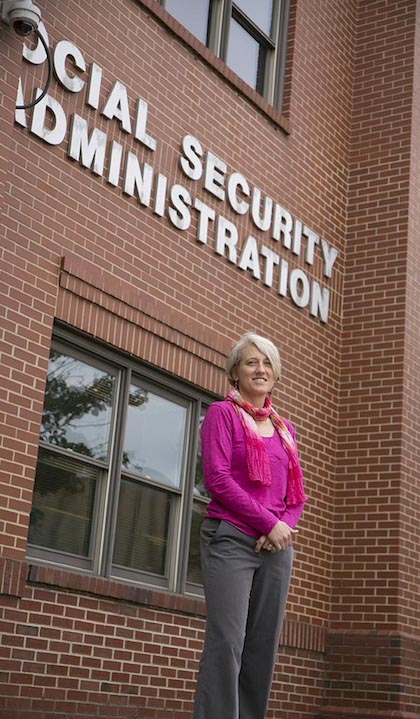How Social Workers Can Improve Social Security
Financial capability expert Julie Birkenmaier, Ph.D., reports as part of a National Academy of Sciences committee.
Social Security has been called the most successful anti-poverty program in history.
Currently, one in six Americans receives Social Security benefits of some kind. More
than 17 million adults living with disabilities receive critical financial support
from the Social Security Administration (SSA) to pay for basic needs such as food,
shelter and clothing.
What happens when a physical or mental disability prevents an individual from managing
his or her benefit payments effectively? Policymakers thought about that back in 1939
when they authorized the payment of benefits to individuals or organizations other
than the beneficiary. These “representative payees” are entrusted with managing the
beneficiary’s payments for necessities such as rent. Currently, about 3.5 million
Social Security disability beneficiaries have representative payees.
“Representative payees are mostly family members, but can also be friends, lawyers,
and social workers,” said Birkenmaier. “It’s an important way of ensuring beneficiaries
have their basic needs met.”
Finding beneficiaries who need help
Having a representative payee decreases the risk of homelessness, arrests, hospitalization,
substance abuse and other problems. Based on reports from the SSA Inspector General’s
office, administrators began to wonder if people who could benefit from a representative
payee weren’t getting one.
“They were seeing people who are eligible for two types of Social Security benefits–for
example, retirement and disability–who only have a representative payee for one,”
says Birkenmaier. “You might guess that if they need a representative payee for one,
they probably need it for the other. The whole system clearly needed review.”
SSA called on the National Academies of Sciences, Engineering and Medicine, who invited
Birkenmaier and other experts to its Committee to Evaluate the Social Security Administration’s
Capability Determination Process for Adult Beneficiaries.
The committee’s report, released in March 2016, argues that a clinical assessment
of financial competence may not be adequate. It suggests system-level changes that
would enable SSA to determine the financial capability of a beneficiary based on evidence
from a range of people who are in a position to observe real-world functioning.
“The problem doesn’t come when someone has trouble in an office with a psychologist
or psychiatrist asking them questions,” said Birkenmaier. “The ability to meet these
basic needs results from an interplay between financial ability and an environment
that doesn’t always support good decision-making.
Basic needs, basic freedoms
Currently, the SSA’s determination system classifies beneficiaries as either financially
capable or incapable, but the reality is that capability can deteriorate or improve
over time.
For people at risk of becoming financially incapable, the committee recommended a
system used by the Department of Veterans Affairs called “supervised direct pay.”
Benefits are paid directly to the beneficiary, but with guidance from someone who
can check how money is being handled.
“We were very conscious about making suggestions that would support beneficiaries’
basic autonomy,” says Birkenmaier. “Supervised direct pay supports clients’ efforts
to be decision-makers in their lives as fully as possible, but having support right
there.”
Opportunities for social workers
Taking financial capability determination into the real world requires professionals
who have frequent and direct contact with the beneficiary– occupational therapists
and social workers would be a good fit.
“Social workers could do a lot more to assess and intervene in client finances, and
I think many aren’t aware they can do that,” says Birkenmaier.
“Part of the challenge is to better educate our students in what they could be doing
to help. Currently, finances are not interwoven well into social work education, which
is something we’re working on,” says Birkenmaier. “We are offering classes in financial
capability at the undergraduate and graduate levels- something that few social work
programs offer at this time. While many programs are beginning to integrate financial
capability into their courses, our dedicated classes are innovative in this field.”
###
CPHSJ Communications
Published: April 25, 2017
This article first appeared in the fall 2016 issue of the College for Public Health and Social Justice's SoJust magazine.
About the College for Public Health and Social Justice
The Saint Louis University College for Public Health and Social Justice is the only academic unit of its kind, studying social, environmental and physical influences that together determine the health and wellbeing of people and communities.
It also is the only accredited school or college of public health among nearly 250 Catholic institutions of higher education in the United States. Guided by a mission of social justice and focus on finding innovative and collaborative solutions for complex health problems, the College offers nationally recognized programs in public health, social work, health administration, applied behavior analysis, and criminology and criminal justice.